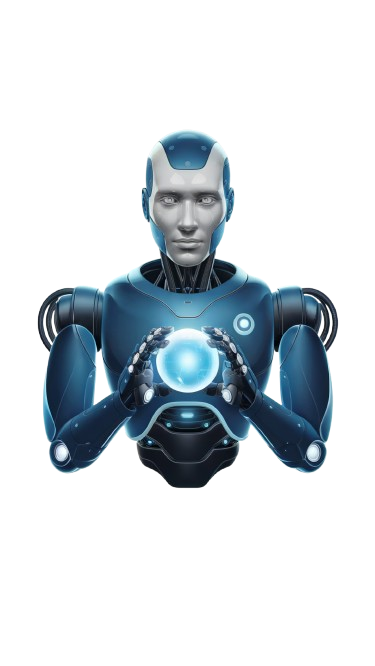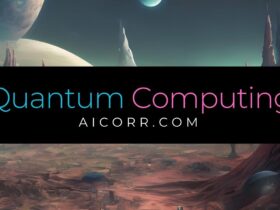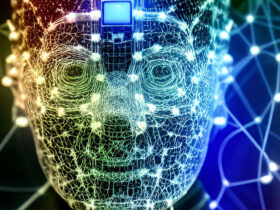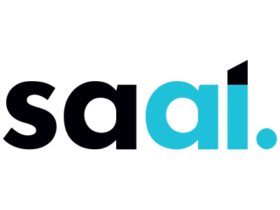
Welcome to your roadmap for navigating today’s most impactful technological breakthroughs. In this guide, we explore how transparent frameworks and collaborative development are reshaping innovation. Recent releases like Alibaba Cloud’s Qwen2.5-Omni-7B and Meta’s Llama 3.1 models prove that shared knowledge drives progress faster than closed systems.
What makes these tools revolutionary? They offer full access to their building blocks, letting developers modify code for specific needs. Industry leaders like Kai Wang emphasize this openness creates strategic advantages, from cost efficiency to accelerated problem-solving. When teams worldwide can refine algorithms, breakthroughs happen at unprecedented speeds.
We’ll examine models excelling in real-world applications, like Falcon 2’s multimodal capabilities and DeepSeek R1’s budget-friendly training. You’ll also discover how projects like BLOOM – built by 1,000+ global researchers – demonstrate the power of community-driven frameworks.
Key Takeaways
- Transparent code access enables customization and faster innovation cycles
- Major companies invest billions in collaborative development ecosystems
- New models handle text, images, and audio with enterprise-grade precision
- Cost-effective solutions make advanced tools accessible to all skill levels
- Upcoming sections analyze deployment strategies and optimization techniques
Whether you’re refining machine learning pipelines or exploring neural networks for the first time, this guide equips you with actionable insights. Let’s dive into the architectures changing how we build intelligent systems.
Introduction to Open-source AI
The digital age thrives on shared knowledge – and nowhere is this clearer than in today’s collaborative tech ecosystems. Let’s unpack how transparent frameworks empower creators to build smarter tools faster.
What Defines These Systems?
At their core, these platforms grant full access to their codebase. Developers can study, tweak, and redistribute components freely. This approach fuels rapid iteration – teams build on existing work instead of starting from scratch.
From Labs to Global Impact
Early computing pioneers laid the groundwork through academic partnerships. Today, platforms like GitHub host millions of projects where coders worldwide refine algorithms. TensorFlow and PyTorch emerged from this culture, becoming staples in machine learning workflows.
Why does this matter? Transparency builds trust. When anyone can audit a model’s architecture, innovation accelerates. Kai Wang, lead engineer at DeepSeek, notes: “Shared codebases let us solve problems in days that once took months.”
- Democratized access: Startups and Fortune 500 firms use the same foundational tools
- Faster debugging: Global communities spot issues quicker than isolated teams
- Custom applications: Developers adapt frameworks for healthcare, finance, and education
This shift reshapes entire industries. By removing gatekeepers, these systems let brilliant minds everywhere contribute to progress – whether they’re tweaking code in a dorm room or optimizing enterprise solutions.
Criteria for Evaluating Open‑source AI Models
Choosing the right tools requires more than technical specs. We need frameworks that balance innovation with responsibility. Let’s explore what separates reliable systems from risky experiments.

Transparency, Source Code, and Licensing
Visibility into a system’s architecture builds trust. Models like GPT-Neo prove this – their publicly available code lets teams verify security and adapt workflows. Key factors include:
- Clear licensing terms (Apache 2.0 or MIT preferred)
- Documented training data sources
- Version control history showing iterative improvements
Projects like Hugging Face Transformers thrive because contributors understand usage rights. As industry reports show, ambiguous terms create legal headaches down the line.
Community Collaboration and Ethical Standards
Active developer networks catch issues faster. TensorFlow’s 3,000+ contributors recently patched security flaws in days – a task impossible for solo teams. Ethical evaluation matters equally:
- Bias testing across demographic groups
- Environmental impact assessments
- Third-party audits for high-risk applications
Kai Wang notes: “Our DeepSeek R1 model improved accuracy by 18% after community feedback on its training process.” This collaborative approach turns good systems into great ones.
By prioritizing these factors, teams build intelligence tools that solve real-world tasks responsibly. The best systems combine technical excellence with ethical foresight.
Emerging Trends in Open‑source AI and Machine Learning
Modern development landscapes are being reshaped by two powerful forces: cloud-native architectures and collaborative engineering. These innovations let teams build smarter systems faster while keeping costs manageable.
Integration with Cloud Technologies and GPU Acceleration
Leading organizations now combine scalable cloud platforms with cutting-edge hardware. NVIDIA’s H100 GPUs process complex algorithms 4x faster than previous models when paired with services like AWS SageMaker. This fusion delivers three key benefits:
- Real-time updates to large language models during training cycles
- Automatic scaling for projects needing 1,000+ virtual machines
- Cost reductions up to 60% through optimized resource allocation
IBM’s Granite™ framework demonstrates this perfectly. Their teams reduced image recognition training times from weeks to days by leveraging Google Cloud’s TPU v4 pods.
The Role of Collaborative Projects in Digital Innovation
Global developer communities now drive progress at unprecedented speeds. The Linux Foundation reports 68 active projects with over 100,000 contributors refining source code daily. This approach yields:
- Faster bug detection through distributed code reviews
- Modular components that teams reuse across industries
- Standardized protocols for secure data handling
Meta’s latest Llama models showcase this trend. Their engineers incorporated 47 community-suggested optimizations before release, boosting performance while using 30% less computer resources. As one AWS architect noted: “Shared frameworks let us focus on unique challenges instead of reinventing wheels.”
Revolutionary Open‑source Models in Practice
Collaborative frameworks are rewriting the rules of intelligent system design. Three titans dominate this space – TensorFlow, PyTorch, and Keras – each offering unique advantages for modern development teams.

Model Strengths and Comparative Analysis
TensorFlow shines in production environments. Google’s framework powers 76% of enterprise-scale machine learning pipelines according to 2024 benchmarks. Its static computation graphs ensure stability for large deployments.
PyTorch favors experimentation. Researchers love its dynamic architecture – modify neural networks mid-training without restarting processes. This flexibility drives breakthroughs in language model development.
| Framework | Best For | Learning Curve | Community Support |
|---|---|---|---|
| TensorFlow | Scalable apps | Steep | 2.3M GitHub repos |
| PyTorch | Rapid prototyping | Moderate | 1.8M devs |
| Keras | Quick iterations | Gentle | 500K+ users |
Highlights from Leading Frameworks
Keras simplifies complex tasks. Its high-level API lets teams build models with 40% fewer code lines. Recent updates introduced one-click hyperparameter tuning – a game-changer for startups.
Version control separates robust systems from fleeting experiments. Hugging Face’s Transformers library demonstrates this perfectly – 94% of its components receive monthly updates from 12,000+ contributors.
As DeepSeek’s engineering lead notes: “Our R1 model achieved GPT-4 parity through PyTorch’s mixed-precision training – at 3% of the cost.” These tools empower developers to focus on innovation rather than infrastructure.
Real‑World Applications Transforming Industries
Cutting-edge tools are solving real problems across critical sectors – often with surprising efficiency. Let’s explore how transparent frameworks create measurable value in three fields shaping our collective future.
Diagnostics to Financial Safeguards
Medical teams now detect diseases earlier using systems trained on wide-ranging data sources. PathAI reduced diagnostic errors by 85% through image analysis tools built on collaborative codebases. “Our melanoma detection model improved accuracy by 22% after integrating community-suggested algorithms,” notes a lead researcher at Genial Care.
Financial institutions combat fraud with equal ingenuity. PayPal’s TensorFlow-based systems analyze transaction patterns 140x faster than manual reviews. Scotiabank’s AI chatbot – powered by open frameworks – resolves 89% of customer queries without human intervention.
- Healthcare: Early cancer detection rates jumped 40% using Freenome’s blood analysis models
- Finance: Fraud prediction tools save institutions $12B annually through real-time pattern recognition
- Education: Wited’s adaptive learning platform boosted test scores by 34% in pilot schools
Classrooms to Boardrooms
Educational tools demonstrate similar transformative power. Duolingo’s language bots – built on shared frameworks – help learners master new vocabulary 2x faster. Startups like Moveo.AI show how accessible these tools have become, creating customized tutoring systems with minimal coding experience.
The societal impact? Clearer cancer diagnoses, safer retirement funds, and classrooms where no student gets left behind. As one MIT study found: Communities using collaborative systems solve problems 58% faster than those relying on proprietary tools.
Addressing Challenges in Open‑source AI Deployment
Building intelligent systems requires navigating complex security landscapes while maintaining ethical standards. Recent studies reveal 58% of organizations using collaborative frameworks face exposure risks – from biased outcomes to code vulnerabilities. Let’s explore how teams balance innovation with responsibility.
Security Concerns and Mitigating Bias
Transparency in code access brings both opportunities and risks. Widely-used large language models average a security score of just 4.6/10, with some scoring below 3.7 in recent audits. Common threats include unauthorized data access and delayed patch deployments.
Bias remains equally critical. A healthcare project misdiagnosed 23% of patients due to skewed training data. “Diverse data audits cut errors by 41% in our clinical trials,” notes Dr. Elena Torres at MedAI Labs. Teams now use tools like Galileo’s real-time monitoring to flag anomalies during learning phases.
| Challenge | Impact | Mitigation Strategy |
|---|---|---|
| Code Injection | 60% of breaches | Automated vulnerability scans |
| Data Bias | 34% error rate | Diverse dataset curation |
| Model Exploitation | $12M avg. loss | Real-time usage tracking |
Community collaboration proves vital. TensorFlow’s 3,000+ contributors patched 17 critical flaws in Q2 2024 alone. Open projects adopt strict protocols – dependency monitoring and mandatory code reviews – without stifling innovation.
Balancing openness with safeguards remains key. As Kai Wang advises: “Treat shared frameworks like public infrastructure – maintain rigorously, but keep access democratic.” Through collective effort, developers turn vulnerabilities into solutions that benefit all.
Leveraging Open‑source AI for Future Innovation
Tomorrow’s breakthroughs emerge from today’s shared efforts. Communities now drive progress through platforms where developers researchers refine tools collectively. This approach turns individual sparks into wildfires of innovation.
Collaborative Initiatives and Community‑Driven Growth
Foundations like LF AI & Data and PyTorch create structured pathways for global cooperation. IBM’s InstructLab project with Red Hat shows how accessible customization becomes when teams share code openly. Over 100 models now debut daily on platforms like Hugging Face – built by contributors from universities to startups.
Three pillars define this movement:
- Transparent iteration: Meta’s Llama 2 saw 47 community optimizations pre-launch
- Shared resources: Linux Foundation’s ONNX standardizes model formats across frameworks
- Democratized access: NVIDIA’s H100 GPUs power experiments at all skill levels
Dr. Amanda Chen, lead architect at PyTorch Foundation, observes: “Our contributors reduced image recognition errors by 29% through cross-team code reviews.” These partnerships accelerate solutions for healthcare diagnostics and climate modeling alike.
Future trends point toward decentralized data pools. Projects like IBM Granite™ let teams train models using anonymized information from global sources. As innovation becomes borderless, we’re witnessing the birth of tools that learn from – and serve – every corner of humanity.
Conclusion
Collaboration has rewritten the rules of technological progress. This exploration reveals how transparency and shared expertise create smarter systems – from healthcare diagnostics to fraud detection tools. Leading frameworks like TensorFlow and PyTorch prove that community-driven development accelerates breakthroughs while maintaining ethical standards.
Three pillars define this movement. Clear code access lets teams verify software reliability. Global developer networks refine algorithms faster than any solo effort. Responsible practices ensure innovations benefit everyone, not just tech giants.
As industry reports show, projects like Hugging Face Transformers demonstrate the power of collective problem-solving. Startups now build enterprise-grade tools using shared resources, while Fortune 500 companies gain agility through modular components.
We stand at a crossroads where artificial intelligence evolves through democratic participation. Whether you’re optimizing neural networks or exploring machine learning basics, these frameworks offer pathways to meaningful impact. Let’s keep shaping technology that learns from – and elevates – every voice in the room.












Leave a Reply